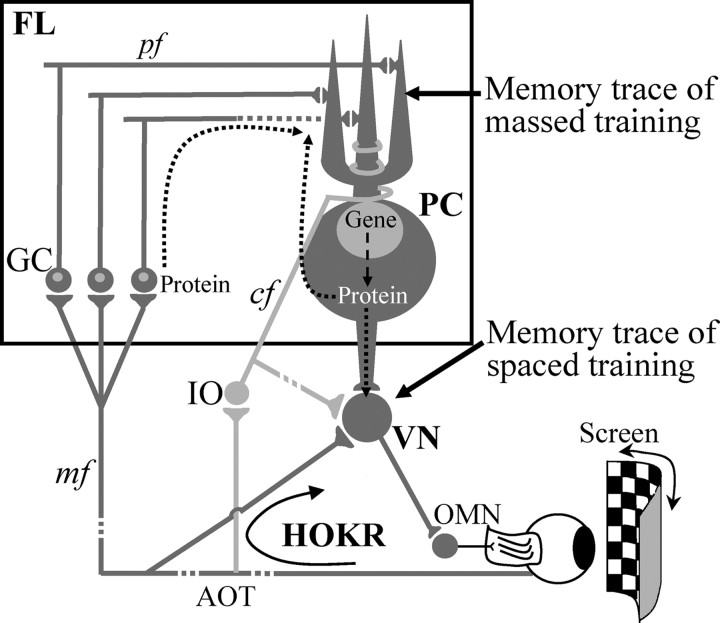Figure 6.
Neural circuitry for mouse HOKR and memory trace of adaptation induced by massed and spaced training. The optokinetic signals that drive the HOKR are mediated to the vestibular nuclei (VN) directly through mossy fiber (mf) collateral inputs from the accessory optic tract (AOT) or indirectly through the axons of the flocculus (FL) Purkinje cells (PC). The retinal slip signals, which are necessary for the induction of HOKR adaptation, are mediated to the flocculus Purkinje cells through climbing fiber inputs (cf). Our study reveals that the memory induced by massed training is maintained in FL, whereas that induced by spaced training is maintained, most presumably, in VN. GC, Granule cells; IO, inferior olive; OMN, oculomotor neurons; pf, parallel fibers.

